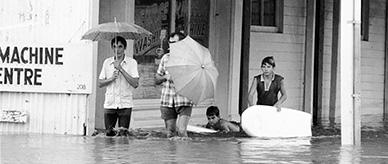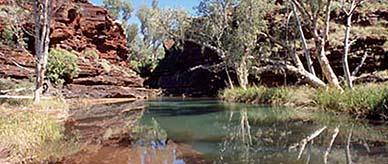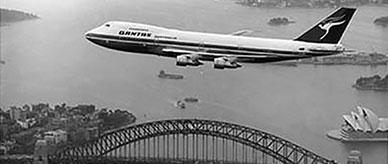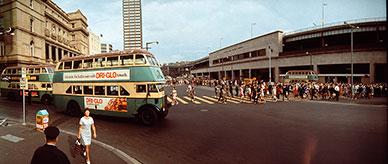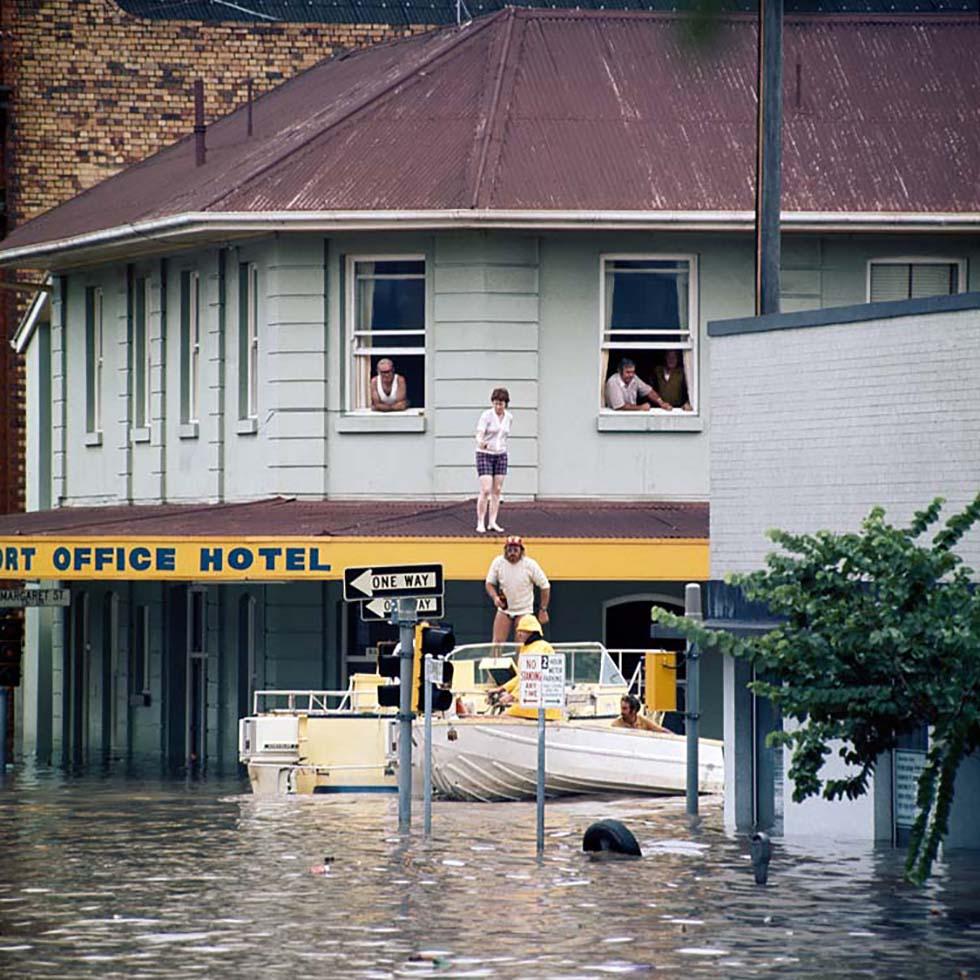


About this record
This colour photograph shows the Port Office Hotel on the corner of Edward and Margaret Streets in central Brisbane during the damaging floods of January 1974. A woman stands on the verandah roof and just below her a man stands on a motor boat with what appears to be a bottle of beer in his hand. Another boat passes by with a man in yellow protective clothing sitting in the bow. People watch from the windows of the upper storey of the partly flooded hotel.
Educational value
- This photograph depicts the extent of the serious flooding that affected Brisbane in late January 1974, triggered by a weakening Cyclone Wanda. Heavy rain fell over several days in an already saturated area. Rainfall of more than 1,300 millimetres was recorded in one part of southern Queensland, while Brisbane itself received more than 800 millimetres. The city centre was flooded when the Brisbane River broke its banks.
- The Port Office Hotel, situated close to the Brisbane River, was just one of about 13,000 Brisbane buildings affected by the 1974 floods. The total estimated cost of the damage was $980 million. More than 35,000 people were directly affected, with 16 dead (most by drowning), more than 300 injured, and 8,000 suffering loss or severe damage to their homes. Flood mitigation measures were undertaken as a result of an official inquiry.
- Brisbane is no stranger to the kind of flood depicted, suffering major floods in 1841, 1857, 1864, 1893, 1897, 1931 and 1974. The 1974 flood was the worst since the 'Great Flood' of 1893. In 1974, the Brisbane River and other major tributaries all received heavy rainfall run-off. The situation was exacerbated by the normal tidal influences in the Brisbane River and a storm surge caused by persistent strong winds in Moreton Bay, into which the river discharges.
- A flood gauge at the Brisbane Port Office alongside the hotel was the main reference point for flood warnings in central Brisbane during the 1974 floods. The river rose steadily at the Port Office for several days, reaching a peak height of 6.6 metres on the high tide at 2.15am on 29 January. Because of a flood gradient or slope, the river height was more than double that in suburbs such as Jindalee, further upriver.
- Early in the 1974 flood crisis, there was a malfunction in the equipment that was supposed to automatically relay the vital flood-gauge readings from the Port Office to the Brisbane office of the Bureau of Meteorology. This meant that Bureau staff had to operate from the Port Office itself, despite its lower floor being inundated, relaying changes in the height of the river by telephone. Staff were taken in and out of the Port Office by boats along Edward Street.
Acknowledgments
Learning resource text © Education Services Australia Limited and the National Archives of Australia 2010.
Related themes
Need help with your research?
Learn how to interpret primary sources, use our collection and more.

